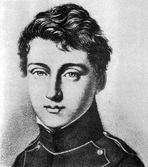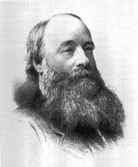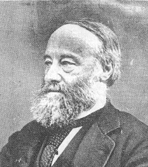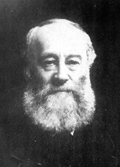History of Thermodynamics
The history of thermodynamics has always seemed to me to be not only one of the most interesting but one of the most dramatic episodes to be found in the story of the intellectual progress of the human mind. Starting in an investigation of a purely practical problem of engineering economics, it has grown into a body of doctrine of profound philosophical significance, with consequences which permeate the thinking of men on many subjects, from those with the most practical use to the problems of cosmology. Throughout its development it has had to struggle with misconceptions arising from imperfections in our apprehensions of the nature of heat and of the structure of matter. The men who have raised the edifice and who form a considerable part of Gibbs' intellectual ancestry have been men of interesting and most diverse character and experience and were drawn from many professions -- the military, the engineering, and the medical as well as that of teaching. No other branch of physics except that of electricity has exerted so profound an influence on the thought of mankind or extended that influence over so vast a domain.
The science of thermodynamics originally comprised only what is implied in its etymology: the relations between heat and mechanical work. In the course of time, and in no small measure because of the work of Willard Gibbs, the meaning of the word has been broadened to embrace the whole field of the transformations of energy between all the forms in which it may be manifested -- thermal, mechanical, electrical, chemical, or radiant. In its original restricted significance the development of the theory may be summarized in two distinct steps. The first was taken in 1824 by a young French military engineer, Nicolas Leonard Sadi Carnot.

Nicholas Léonard Sadi Carnot
(1796 - 1832)
French engineer and physicist. Developed the physical elements of the steam engine using a thought-experiment (carnot cycle).
He conceived that heat is a result of the movements of small particles and calculated (a long time before R. Mayer) the mechanical equivalent of heat.
In his "Réflexions sur la puissance du feu et sur les machines propres à développer cette puissance" (Paris, 1824), he showed that the work produced by a steam engine is proportional to the heat transferred from the boiler to the condenser, and that in general work could only be gained from heat by a transfer from a warmer to a colder body. (Carnot's law, was later modified by R. Clausius to the second law of thermodynamics.)
His objective was to determine how the greatest amount of mechanical work can be obtained from a given amount of heat. In the solution of this engineering problem he enriched science with two of its most fertile concepts and a method of reasoning which has become classic. In this essay is to be found the first recognition of the necessity of returning a body to its initial state in order to strike a true balance between the changes it may have undergone. In it also occurs the first formulation of the concept of reversible processes; that is, those in which an infinitesimal change in the external conditions to which a body is subject will cause a reversal of the direction of the process.
With the aid of these new concepts he proceeded, in one of the most brilliant feats of the imagination in the history of science, to show that with a heat reservoir at a given temperature from which heat could be taken by a working substance, and with another reservoir at a lower temperature into which it could reject heat, the greatest possible amount of mechanical work can be obtained when all the processes undergone by the working substance are reversible.
The argument runs, in brief, as follows: Suppose we have an engine whose working substance, e.g., steam, takes an amount of heat (H) from a hot reservoir (such as a steam boiler), does an amount of work (W) on an external load, rejects an amount of heat (h) to a cooler reservoir, and is then returned to its original condition, so that the process can be repeated indefinitely. If all these operations can be imagined to be performed reversibly the engine will, when the work (W) is done upon it in each cycle by an outside agency, run in the reverse direction, taking the heat (h) from the cooler and delivering the heat (H) to the hotter reservoir in each cycle.
Thus if any engine (reversible or nonreversible) operating between the same two reservoirs can be supposed to be able to perform the same amount of work (W) on a smaller amount of heat than (H), i.e., can be more efficient, it could be made to drive the reversible engine backward; and since the combined engines would in each cycle of operation return to the hot reservoir a larger amount of heat than the driver takes from it, we would have heat continuously transferred from a cooler to a hotter body by a self-contained system receiving no external aid. As such a result is contrary to all experience, it must be concluded that no engine can be more efficient than a reversible engine when they both work through the same range of temperature; or alternatively, that the maximum amount of work from a given supply of heat is obtainable only by means of a reversible engine. This conclusion is known as "Carnot's principle." It should be noted that the argument on which it is based is independent of the nature of the working substance or of the particular cycle of operations which it follows. The only things essential to the conclusion are first, the existence of different temperatures for the reservoirs; second, the reversible nature of the operations undergone by the working substance; and third, the denial of the possibility that heat can be transferred from a colder to a hotter body by any unaided self-acting contrivance.
This third essential element of the argument is known as the "Second Law of Thermodynamics." Although inherent in the derivation of Carnot's principle, it was not specifically formulated by him as a law. Not until more than twenty-five years later did Clausius and William Thomson (Lord Kelvin) formulate it as one of the foundation stones of the science of thermodynamics.

Rudolf Julius Emanuel Clausius
(1822 - 1888)
German physicist. R. Clausius was professor in Zürich, Würzburg, Bonn and was one of the founders of statistical mechanics. ("Über die Art der Bewegung, welche wir Wärme nennen")
He formulated the second law of thermodynamics and introduced the entropy as equation of state.
In his work "Über die bewegende Kraft der Wärme und die Gesetze, welche sich daraus ableiten lassen" (Poggendorffs "annalen", 1850) he defines the elements of classical thermodynamics, with all major implications of the mechanical equivalent of heat. He modified Carnot's law such, that the work produced by heat is not only proportional to the heat transferred from the warmer to the colder body, but is also proportional to the temperature difference of the two bodies.
His major publications are the "Abhandlungen über die mechanische Wärmetheorie"(Braunschweig, 1864-67). Second Edition in three volumes: Vol. 1: "Die mechanische Wärmetheorie", (1876), Vol. 2: "Die mechanische Behandlung der Elektrizität" (1879), Vol. 3: "Entwicklung der besonderen Vorstellung von der Natur der Wärme als eine Art der Bewegung" (later edited by Planck and Pulfrich as "Kinetische Theorie der Gase" (1889-91)).
The two other essentials of Carnot's argument -- the concept of reversibility and the consequence that mechanical work cannot be obtained from heat in the absence of the existence of a temperature difference -- are also equally fundamental in the science. But although Carnot must be regarded as the creator of the new science, he was unable to take the next step: the quantitative determination of the magnitude of the ideal efficiency. This was because of the confusion then existing in the scientific world as to the nature of heat. There is some evidence in the Reflexions itself, and still more in his posthumous papers published many years later by his brother, that Carnot was dubious as to the soundness of the then widely accepted "caloric" or materialistic theory of heat and was inclined toward the kinetic theory of its nature.
However, the man who first took this second step, and through whom most physicists learned of Carnot's work, Benoit Pierre Emile Clapeyron,6 was a firm adherent of the idea that heat was a material "fluid.". "Memoire sur la puissance de la chaleur," Journal de l'ecole polytechnique. He put Carnot's principle in the mathematical form that the efficiency of a reversible engine was a function solely of the temperatures of the two reservoirs (Carnot's function), and proceeded to determine its value by the consideration of a particular reversible cycle applicable to the change of state of a substance(liquid to vapor or solid to liquid). Unfortunately, although his result was correct, in deriving his expression he assumed (as was natural on the caloric hypothesis) that the heat taken from the hot reservoir (H) was the same as that rejected to the cold reservoir (h), the work done being accomplished by the fall in temperature in a manner analogous to that done by a water wheel through the fall of the water because of the difference in height of the intake and the outflow.
Now experimental evidence had been accumulating – from that furnished by the work of Benjamin Thomson (Count Rumford) and Sir Humphrey Davy just before 1800 to that of Robert Mayer and James Prescott Joule in the 1840's -- that heat and mechanical work are simply two different manifestations of the same entity, that both are forms of energy; and that when one form is transformed into the other the ratio of the amounts so converted is in all cases the same. This statement is an expression of what is known as the First Law of Thermodynamics. When heat energy is supplied to a body from without, it in general expands (doing work) and grows hotter (increasing its "internal", or "intrinsic" energy).



James Prescott Joule
(1818 - 1889)
British physicist. Was a brewer in Salford and is often considered as the founder of experimental thermodynamics.
Formulated in 1840 that the heat (Q) produced in an electric wire in the time dt is Q = U I dt. This is known as Joules Law.
In 1843 he determined the mechanical equivalent of heat (See also J.R. Mayer and S. Carnot) and formulated the law of conservation of energy. (The same Law was formulated by J.R. Mayer in 1842 and by L. Helmholtz in 1847.)
Together with W. Thomson (Lord Kelvin) he discovered 1853 the effect known as Joule-Thomson effect.
The SI Unit "Joule" was named in his honour.
Thus if these three forms of energy are expressed in the same unit and increases in each are reckoned as positive, by the first law for any transformation of energy in either direction the resulting change in intrinsic energy is the difference between the heat energy supplied the body and the work it performs. Where no heat energy is supplied the work is performed at the expense of the intrinsic energy and the stock of mechanical energy external and internal is unchanged or conserved. When a body is put through a cyclic process which returns it periodically to its initial state, there can be no change in its intrinsic energy and hence the net heat energy supplied must equal the work performed; that is, its whole energy in both forms is unchanged or conserved. Hence the first law may be regarded as an expression of the general principle of the "conservation of energy," valid for transformations between the two forms, heat and mechanical energy.
With the final triumph of the first law in the late 1840's, it be came necessary to correct Clapeyron's mistaken derivation of the Carnot function. Instead of the relation assumed from the hydraulic analogy that the amounts of heat energy received and rejected by working substance are equal, the first law requires that their difference be the thermal equivalent of the external work done, or
W= H – h
On the basis of this relation Thomson showed (in 1848) that by choosing a series of heat reservoirs of uniformly descending temperatures and by supposing that reversible engines each doing the same amount of external work are operated between them in such a manner that the heat rejected by one becomes the heat received by the next in the series, we would ultimately arrive at a point where there would no longer remain any heat to be rejected. The temperature of this last reservoir would then be the lowest conceivable -- the absolute zero of temperature.
A scale of temperatures thus based on the amounts of work performed by such a series of reversible engines then leads to the reciprocal of the temperature of the hottest reservoir as the value of Carnot's function, and yields for the efficiency of a reversible engine the expression
Work done/Heat received = (Heat rejected-Heat received)/Heat received
Work done/Heat received = Trej-Trec/Trec;
where Trec - Temp. of reception
Trej - Temp of rejection
The scale of temperature thus specified is variously called the "work," the "absolute," the "thermodynamic," or the "Kelvin" scale.
In what follows a temperature is always to be understood as one measured on this scale whose "zero point" is some 273 degrees below that of the centigrade or about 460 degrees below that of the Fahrenheit scale. Thus it was twenty-four years after the enunciation of Carnot's principle that it received its exact quantitative expression, and another two years before it can be said to have been placed upon its final firm foundation by Clausius' formulation of a precise statement of the second law.
The further development of the fundamental theory consists in the interpretation of the equation just given and in the combination of the expressions for the two laws into a single equation. It was from the alternative form of the above expression for the efficiency of a reversible engine,
Heat rejected/Temp. of rejection = Heat received/Temp.of reception
that Clausius derived the concept of "entropy." This quantity is one of the characteristics specifying the state of a substance, as do its temperature or pressure, its volume or intrinsic energy. It may be defined as the ratio of the heat energy taken in or given out in reversible changes of the condition of a body to the absolute temperature at which the change takes place. Another definition is possibly more instructive.
Thus since no actual engine can attain the efficiency of the ideal reversible engine, it follows that in all actual conversions of heat into mechanical energy there is necessarily incurred a waste of energy; and the change of entropy in such conversions may be taken as the measure of this unavoidable waste, or it may be defined as that entity which multiplied by the lowest available temperature gives the magnitude of the necessarily lost energy.
It is difficult to obtain a clear mental picture of entropy, mainly because we have no sensory response to it as we have to other characteristics such as temperature or volume. But it is one of the most useful concepts ever introduced into physics. It permits, for instance, a simplification of the statement of Carnot's principle as great as that resulting from the idea of "absolute" temperature. Thus, as can be seen from the above alternative expression of the principle, the result can be stated simply that for the system of the two reservoirs and the working substance the change in entropy vanishes; or in reversible cycles entropy is conserved. Another illustration of the simplification introduced by this concept lies in the conclusion derived by Clausius (and seen most clearly perhaps from the second of the above definitions) that in all nonreversible processes, that is in all natural changes, the entropy must increase. This result which he embodied in his statement of the second law, Die Entropie der Welt strebt einem Maximum zu,'' together with the equally challenging form he gave to the first law," Die Energie der Welt ist constant," was placed by Gibbs at the head of his great monograph. They fitly summarize the foundations upon which he built. A final(example of the usefulness of the idea of entropy is afforded by the compactness and simplicity it leads to the combination of the two laws of thermodynamics into what may be styled the "prime" fundamental equation of the science.
For reversible processes where the work performed can be expressed as the product of the pressure by the resulting volume change, that is
for fluids (gasses, vapors, and liquids) and for noncrystalline and unstrained solids, it reads,
Change in intrinsic energy=
(a) Change in heat energy -Change in mechanical energy
(b) Temperature x Change in entropy - Pressure x Change in volume
This equation is fundamental, in the sense that if from experiment we know for any substance how the change in energy depends on the entropy and volume changes, then the equation suffices to determine all of its
thermal and mechanical properties. The equation is of course valid only for bodies uniform in composition.
This fundamental equation formed the starting point for Gibbs' development and extension of thermodynamics. In a sense it may be said to embody the whole of his indebtedness to his predecessors. No one had in the slightest degree anticipated the line of his further development of the subject. Prior to him no one had realized that the equation could be generalized to include non-homogeneous bodies, or had seen that when so expanded it would hold the key to the great domain of chemical equilibrium.
The story of how Gibbs was led step by step with inexorable logic to his great generalization and the completeness with which he explored its consequences and implications form a narrative almost unique in the history of science. "On the Equilibrium of Heterogeneous Substances" appeared upon the scientific horizon in the 1870's as unheralded as had Carnot's Reflexions in the 1820's; but whereas Carnot's work required that of Kelvin and Clausius to bring it to fruition, Gibbs' work forms a completed whole in whose framework the developments of the succeeding threequarters of a century in the fields it covers appear for the most part as necessary and inevitable consequences. Like Sir Isaac Newton's Principia, this work of Willard Gibbs stands out in the history of man's intellectual progress as an imperishable monument to the power of abstract thought and logical reasoning.


1 Response to History of Thermodynamics
MOSAVIPOAR LEARNING TINING TINING TINING TINING TINING
MOSAVIPOAR LEARNING mens titanium watches TINING TINING TINING TINING TINING TINING titanium armor TINING camillus titanium knife TINING TINING TINING TINING TINING TINING TINING TINING tube supplier TINING Rating: 5 · gr5 titanium 7 reviews
Something to say?